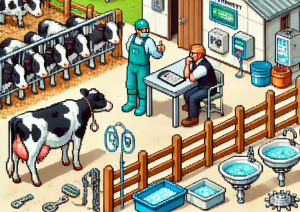
The Rural-Urban Divide in Marijuana Use: What Legalization Reveals
Marijuana, once an illicit substance across the United States, is now legal for medical use in many states. With this shift, researchers are keen to understand how legalization impacts marijuana use across different populations. A recent study focuses on the differences between rural and urban areas. The findings offer critical insights that could shape public health interventions and policies.
Why This Study Matters
Marijuana use is widespread in the U.S., with about 18% of the population reporting usage as of 2019. However, usage rates vary significantly based on factors like age, race, and geography. Understanding these patterns, especially post-legalization, is crucial for addressing potential health and social issues related to marijuana use.
Diving into the Data
The study used data from the National Survey on Drug Use and Health (NSDUH) spanning 2015 to 2019, encompassing over 210,000 participants. Researchers analyzed how often people used marijuana, instances of marijuana abuse and dependence, and rates of driving under the influence. They compared these factors across states with and without legalized medical marijuana, adding an extra layer of analysis by examining rural versus urban differences.
Key Findings
- Increased Use in Legal States: People living in states where medical marijuana is legal reported using marijuana more frequently. On average, they used marijuana 10.69 more days per year compared to those in states where it remains illegal.
- Rural vs. Urban Patterns: Interestingly, the frequency of marijuana use was higher in rural areas compared to urban ones within states where medical marijuana is legal. People in small towns and rural areas used marijuana significantly more often than their city counterparts.
- Lower DUI Rates: One positive finding was a decrease in driving under the influence of marijuana in states with legalized medical marijuana. This suggests that legalization might encourage more responsible behaviors or perhaps better access to marijuana in safer settings.
- Dependence Concerns: The study also noted a higher likelihood of marijuana dependence in states where medical marijuana is legal. This raises concerns about the potential for increased problematic use.
What Does This Mean for Public Health?
These findings highlight a complex landscape where marijuana legalization can lead to increased usage, particularly in rural areas, but also potentially foster safer behaviors like reduced driving under the influence. Public health practitioners and policymakers need to consider these nuances when designing interventions and regulations.
For instance, rural areas might require more targeted education and resources to manage the higher rates of use and dependence. Meanwhile, the reduction in DUI rates suggests that legalization might be associated with more responsible usage patterns, possibly due to regulated dispensaries providing safer access compared to illicit markets.
The Rural Impact
Rural areas often have fewer healthcare resources, which can exacerbate issues related to substance abuse. The increased frequency of use in these areas could strain local healthcare systems and highlight the need for more robust support and intervention strategies tailored to rural communities.
Moreover, rural residents might face different social pressures and economic challenges that influence their substance use behaviors. Understanding these unique factors is essential for creating effective public health campaigns and support systems.
Urban Dynamics
In contrast, urban areas showed lower usage rates but higher dependency on marijuana. This suggests that while fewer people might use marijuana frequently in cities, those who do are at greater risk of dependence. Urban public health initiatives might need to focus more on preventing and treating dependency rather than merely reducing usage rates.
Protective Attitudes
The decrease in DUI rates in states with legalized medical marijuana is a significant finding. It implies that legalization might encourage users to consume marijuana in safer environments, perhaps due to better regulation and accessibility. This protective effect could inform future policies to enhance public safety while managing marijuana use.
Join the Conversation
- How do you think marijuana legalization has impacted your community, whether rural or urban? Share your experiences and observations.
- What strategies do you believe could effectively address the higher rates of marijuana use and dependence in rural areas?
Conclusion
The study offers valuable insights into the changing patterns of marijuana use in the U.S. following legalization. It underscores the importance of considering geographic differences when crafting public health interventions and policies. By understanding and addressing the unique needs of rural and urban populations, we can better manage the public health implications of marijuana use.
Be Part of the Change – Get Weekly Updates!
Stay informed and connected. Subscribe for free and share this blog to make a difference in public health with others.



